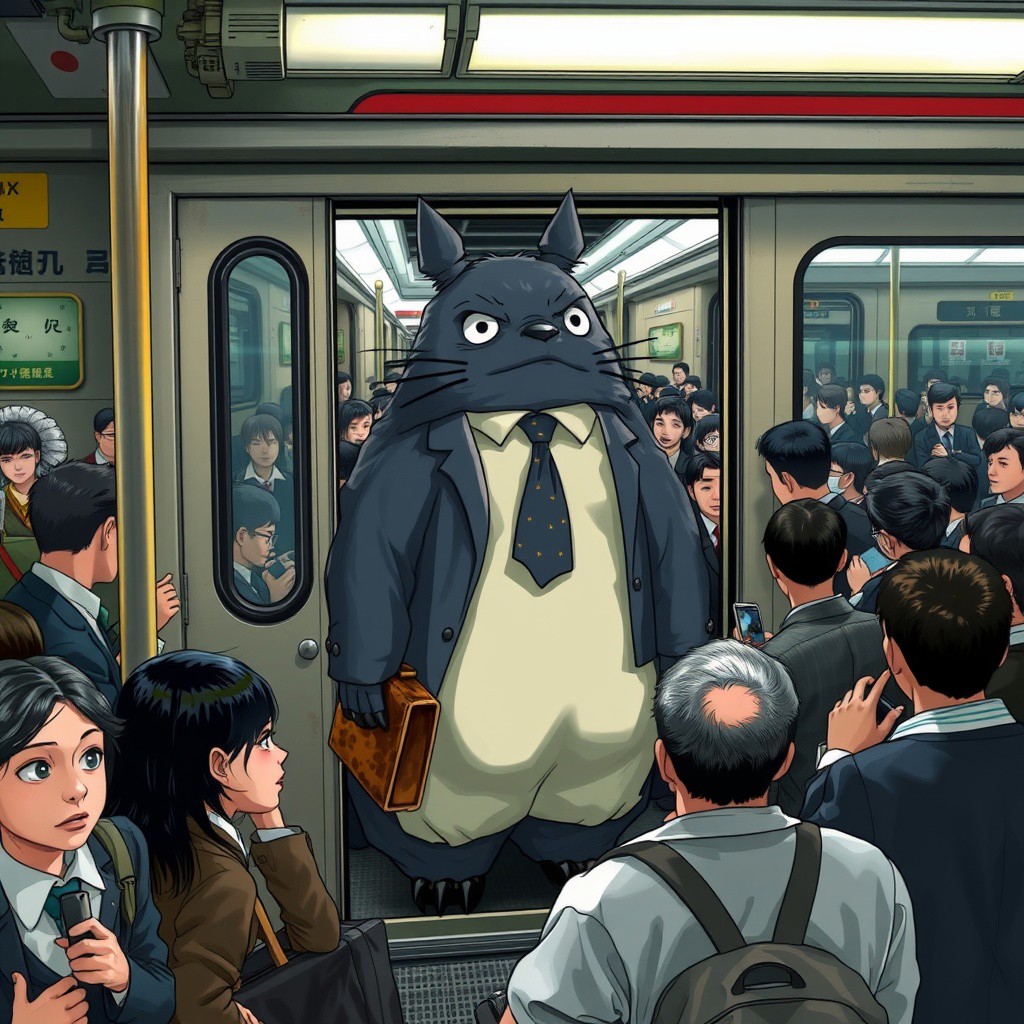From the bustling platform of a Tokyo Metro station, a weary Totoro is visible through the open doors of an overcrowded train, facing outward. His fur is slightly matted and sagging from exhaustion, his expression softened by fatigue after a long day. He wears a disheveled Japanese salaryman suit—dark blue fabric wrinkled, white shirt untucked and crumpled, tie hanging crooked with a missing jacket button. His large, clawed paws clutch a scuffed leather briefcase, worn from years of use. Inside the train, passengers are jammed together—salarymen in stiff suits, students in crisp uniforms, and office workers gripping straps or phones—pressed shoulder-to-shoulder under harsh fluorescent lights. The air hums with muffled chatter and the distant screech of rails. Outside, a chaotic crowd of commuters surges toward the open doors, elbows jostling and briefcases swinging as they try to squeeze into the already packed carriage. A few platform onlookers—a young woman with wide eyes, an elderly man with a furrowed brow, and a small child in a bright red coat pointing excitedly—stare at Totoro in surprise, their faces caught in the station’s dim glow. Totoro, despite his weariness, offers a gentle, lopsided smile to the pointing child, his round eyes crinkling warmly. Beyond the train, the station’s tiled walls are plastered with colorful ads, and a digital clock overhead ticks forward, while the distant rumble of another train echoes through the underground.
